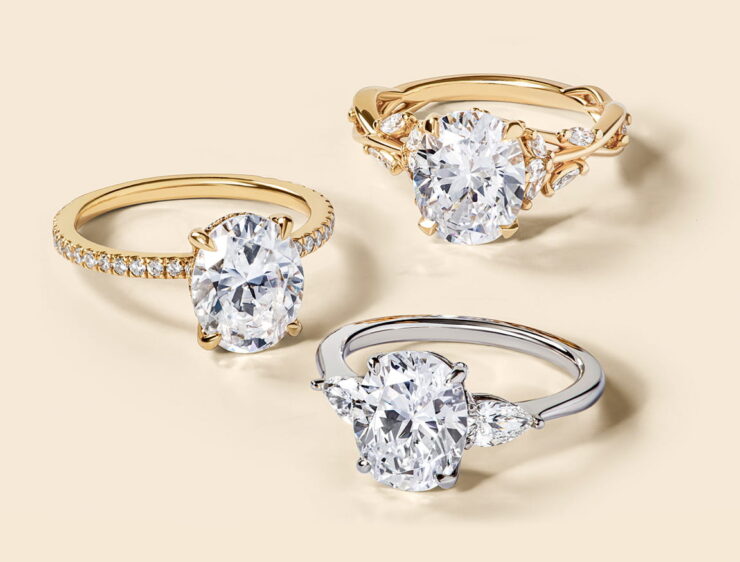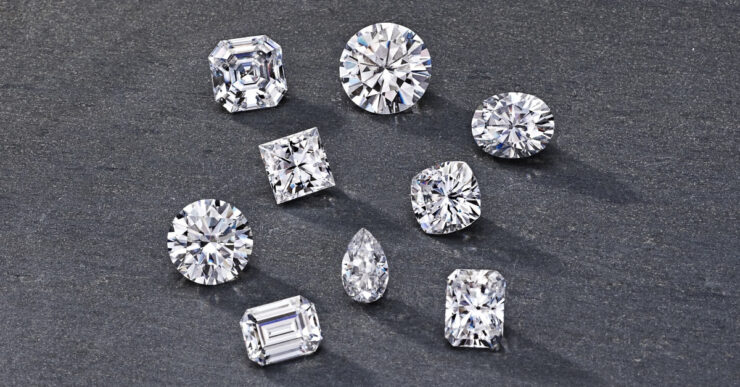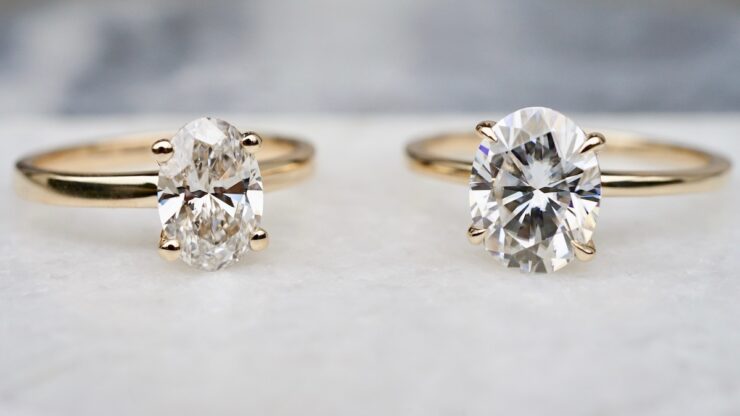When it comes to choosing an engagement ring, diamonds are often the top choice. However, not all diamonds are created equal. Moissanite, a relatively new gemstone, is quickly gaining popularity as an alternative to natural diamonds.
Moissanite is made in a lab using a process called the high-pressure, high-temperature (HPHT) method. In this process, silicon carbide powder is placed in a pressure vessel and subjected to high temperatures and pressures, up to 2,000 degrees Celsius and 1.5 million pounds per square inch. This causes the silicon carbide to crystallize into moissanite.
It can also be created using a process called chemical vapor deposition (CVD). In this method, a gas mixture is introduced into a chamber containing a substrate, and the gas molecules deposit onto the substrate, forming a thin layer of moissanite.
How is Moissanite Different from Natural Diamonds?

While these two may look similar to the naked eye, there are several key differences between the two gemstones.
– Composition – Diamonds are composed of carbon, while moissanite is composed of silicon carbide.
– Hardness – Diamonds are the hardest substance on Earth, with a rating of 10 on the Mohs scale of hardness. Moissanite is also very hard, with a rating of 9.25, but it is not quite as hard as diamonds.
– Brilliance – As mentioned earlier, moissanite has a higher refractive index than diamonds, which means that it bends light more and appears more brilliant. It also has a higher dispersion, creating more fire than diamonds.
– Color – Diamonds come in a range of colors, including white, yellow, brown, blue, pink, and more. Moissanite is typically colorless, although it can have a slight yellow or green tint.
– Cost – Moissanite is significantly less expensive than diamonds. While the price of a diamond can vary greatly depending on the size, color, clarity, and cut, moissanite is generally much more affordable.
Engagement Rings

Moissanite engagement rings have become increasingly popular in recent years, as more people are looking for affordable alternatives to traditional diamond rings. It offers a brilliant sparkle and a lower price point, making it an attractive option for those on a budget.
In addition to the cost savings, these rings are also more environmentally friendly than natural diamond rings. While diamond mining can be destructive to the environment and often involves unethical labor practices, moissanite is lab-created, making it a more sustainable option.
Another advantage of these rings is that they are more durable than natural diamond rings. Moissanite’s hardness rating of 9.25 makes it more resistant to scratches and other damage than diamonds, which can chip or crack more easily.
Conclusion

Moissanite is a beautiful and affordable alternative to natural diamonds, with its high refractive index and dispersion creating a brilliant sparkle and fire. While there are differences between moissanite and diamonds, moissanite engagement rings have gained popularity due to their affordability, sustainability, and durability. Whether you choose a natural diamond or a moissanite engagement ring, it’s important to find a gemstone that speaks to you and your partner and symbolizes your love and commitment.

